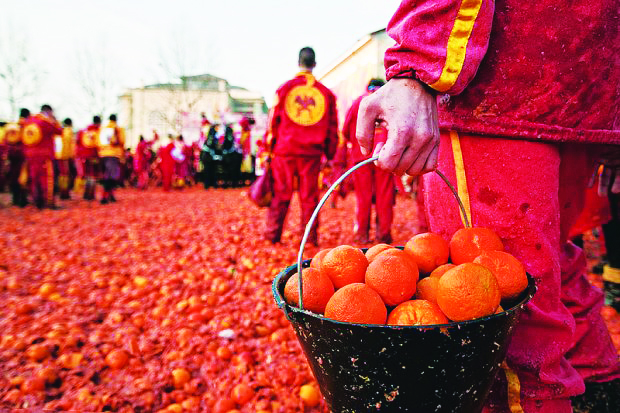The Italian industrial city of Ivrea has been added to UNESCO’s list of World Heritage Sites. Ivrea was developed in the 20th century as a testing ground for Olivetti, the world-famous manufacturer of typewriters, mechanical calculators and office computers. The company has been part of the Telecom Italia Group since 2003. UNESCO described the city as “a model social project,” expressing “a modern vision of the relationship between industrial production and architecture.”
Located in the Piedmont region and situated on the road leading to the Aosta Valley, Ivrea lies in a basin that in prehistoric times formed a large lake. The UNESCO sites comprise the large factory and buildings that were designed to serve the administration and social services of Olivetti, as well as residential units. Designed by leading Italian urban planners and architects, primarily between 1930 and the 1960s, the architectural ensemble reflects the ideas of the Movimento Comunità (Community Movement), which was a model social project, expressing a modern vision of the relationship between industrial production and architecture. During the 20th century, Ivrea became the base of operations for Olivetti. In 1970, about 90,000 people lived and worked in the Ivrea area.
Ivrea and its surroundings have been inhabited since the Neolithic era. It was an outpost of the Roman Empire founded in the first century BC. Much later, Ivrea became the seat of a Duchy under the Lombards and was the capital city of the Franks during the ninth century. It became the property of the House of Savoy in 1356, where it remained for the next four and one half centuries. The Castle of Ivrea, built in 1357 during the reign of Amadeus VI of Savoy, still remains. It has four round towers at the corners. In 1676, a tower, used as an ammunition store, exploded after being struck by lightning. It was never rebuilt. Once a prison, the castle today houses exhibitions.
The town is also the location of the famous Battle of the Oranges that takes place each year during Carnevale. The event involves thousands of townspeople, divided into nine teams, who throw oranges at opponents who are riding in horse-drawn carts. Anyone wearing a red hat is considered a non-combatant and will not have oranges hurled at them. It is also considered very bad form to have even a ricochet hit the horses. By the end of the three days of flying fruit hostilities, more than a half million pounds of Sicilian oranges will have been tossed and the horses are about the only things not covered in the sticky juice.




